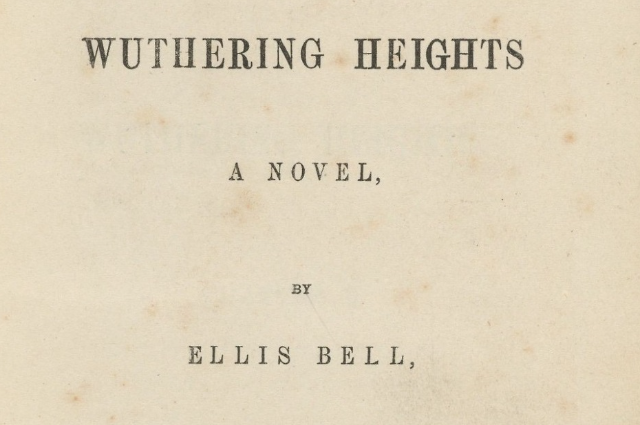The writer combines the Romantic, the Mystic, the psychoanalytic elements on a social platform and reaches out to readers of all times with an exquisite grace that is only hers. Bronte has created complex, yet sensitive characters like Catherine Earnshaw and Heathcliff with exceptional skill that is inherent it seems, and strikes the readers’ highest thoughts and sends a shiver down their body and soul.
Torn between social parameters and imaginary concepts, the novel is an in-depth study of the human soul and its journey on the plane of existence. It is a constant struggle to bring together the living and the eternal, which ultimately culminates in death and the life hereafter. There is a tension between reality and the world of reality in the novel
The language is simple but loaded with underlying implications of life and death; it is the language of poetry with its own melody, symbolism and profound meaning.
The character of Catherine Earnshaw brings the gothic, supernatural Romantic aura from the beginning; she is an individual surpassing all social conventions as a Victorian lady, someone who believes in the identification of the soul in another self, here it is Heathcliff, who is an unwanted person in the Earnshaw mansion, with a social stigma of an orphan, one who dares to love Catherine Earnshaw and confronts complex, untoward situations in life, whose loveable soul moves haywire, committing cruel, savage actions owing to social prejudices and practices. His love for Catherine is so intense that he turns hysteric in failing to marry her. Both are sufferers on earth and can only unite in death, their graves lying next to each other.
The journey of the soul in finding oneself in the other is evident in Catherine’s outburst at her deathbed “ I am Heathcliff “ and Heathcliff‘s breaking down “ O Cathy, my life”, he is ruined at losing his “life”, his “soul” and he cannot rest till his death.
Emily Bronte, the Victorian feminist seeks an identity without any gender bias, her strong willpower plays havoc on the plane of Existence and she is ahead of her time in exploitation of the human psyche and belief in the philosophy of Existentialism.
One finds elements of Freudian philosophy and Lacan’s theory of the identity of the self embedded in her work. Thus, the writer is not confined to the social constraints that threatened the feminist Victorian woman in a patriarchal society.
The writer draws her readers in bringing forth a new concept in Victorian England regarding the search for the identity of the woman in a patriarchal society; she points out that the identity search is not restricted to the woman alone, the man also struggles to assert his identity in society in some way or the other. If a man is a social outcast, he becomes a lonely figure in the world struggling for existence. The outcome in the novel is the formation of identity in a world beyond, ultimately breaking social barriers and being victorious through death. In her novel Emily Bronte pursues a psychoanalytic study in identity search of the self in some other self or some otherness, thus widening the issue of identity search in the world of reality. Society cannot define anybody’s identity; it is the self who determines who he is in this world, and it is his prerogative as to how he finds it. Catherine and Heathcliff, are Bronte’s unique creations in the novel to portray the journey of the soul from birth, life- realization to death and a life hereafter.
This is the philosophy of Plato, and Aristotle, going down to psychoanalysts like Lacan, Freud and others.
The writer is much ahead of her time in her search for identity and does not restrict herself to a social identity of the feminist in a patriarchal society; she speaks of an identity of every individual in life and thus draws a unique position among the women writers of the time. Her poems also speak of mystic, and spiritual thought and are treasured in the poetry of Victorian England.

